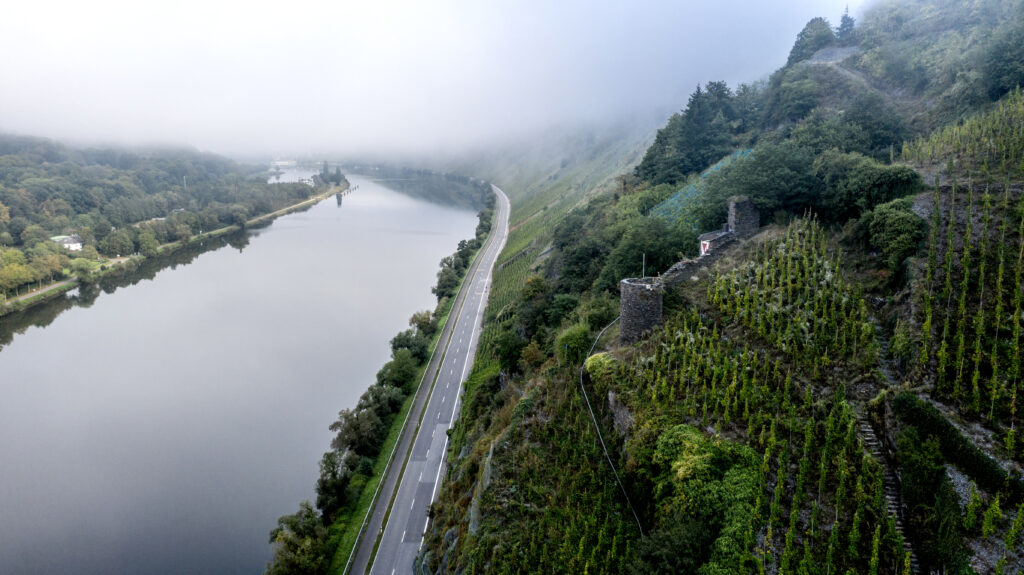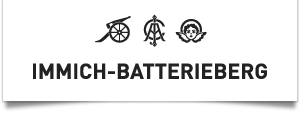The history of viticulture on the Moselle
The Moselle is Germany’s fifth-largest wine-growing region, covering a cultivated area of 8,536 hectares (compared to Rheinhessen, the largest, with 27,499 hectares). White wine accounts for 91% of the production, while red wine makes up 9%.
The primary white wine varieties are 63% Riesling, 9% Müller-Thurgau, and 5% Elbling, with smaller quantities of Pinot Blanc, Auxerrois, and Chardonnay. For red wines, Pinot Noir is predominant, alongside smaller amounts of Dornfelder and Regent.
The Moselle is renowned for its steep vineyards, among the most precipitous in the world, which pose challenges for viticulture but also create ideal conditions for growing Riesling. Iconic sites such as the Batterieberg, Zeppwingert, Zollturm, and Ellergrub vineyards exemplify this steep-slope viticulture.

The region’s soil, composed mainly of slate, retains heat during the day and releases it at night, lending Moselle wines a characteristic minerality and spiciness. Each vineyard offers unique soil compositions: Batterieberg and Zollturm feature gray slate with quartzite, Ellergrub has blue slate, and Steffensberg contains red slate, with the colors influenced by various iron oxides. Microclimates created by the Moselle River’s meanders further enhance the diversity and individuality of the wines.
The Grand Cru sites —Batterieberg, Ellergrub, Zeppwingert, and Zollturm— benefit from reflective surfaces and prolonged sun exposure, with sunlight lingering until 9 PM during midsummer. This combination of slate soils and a cooler climate produces wines of exceptional delicacy, low alcohol levels, and complex aromas.
The Moselle’s viticultural history is ancient and illustrious:
• As early as 500 BC, the Celts cultivated wine.
• The Romans expanded viticulture after occupying the Moselle Valley in the 1st century BC, founding Augusta Treverorum (now Trier).
• Terraced vineyards dating back over 2,000 years remain in use today.
• After the Roman Empire’s decline, monasteries played a key role, introducing Burgundian grape varieties.

The Escheburg, the winery’s central building, dates back to the 9th century and anchors the current estate. The Immich family managed the winery from 1425 until 1980.
In the 19th century, Prussia’s support spurred a golden age for Moselle wines, making them highly sought after globally. Between 1841 and 1845, Carl August Immich created the Batterieberg vineyard using explosive charges to terrace the steep slopes. To honor his pioneering vision, the winery’s entry-level wine is named „CAI.“
The 20th century brought challenges, including overproduction and quality issues after World War II. More recently, a new generation of winemakers has refocused on traditional strengths and high-quality production.
These factors make the Moselle one of the most unique and historically significant wine regions in the world.
